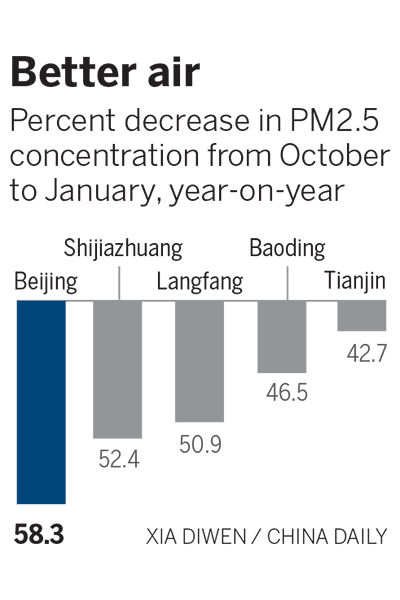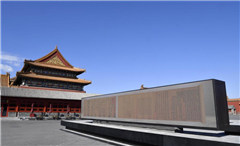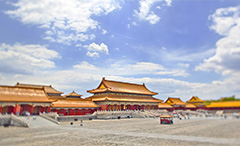Beijing tops list for improved air quality
2018-02-24
China Daily
Beijing has emerged as the best city in its region for air quality improvements over the past four months-a time when the capital usually suffers its worst air pollution-according to the Ministry of Environmental Protection.
From October to January, all 28 cities in the Beijing-Tianjin-Hebei region and surrounding areas saw their air quality improve. Beijing topped the list, as its average concentration of PM2.5 decreased by 58.3 percent from the same period year-on-year. PM2.5 refers to inhalable particulate matter with a diameter of 2.5 micrometers or less that is linked to health problems.
Shijiazhuang, Hebei province, came in second, with a decrease of 52.4 percent.
There are, however, big differences between cities. Jining, Shandong province, saw the smallest year-on-year decrease-just 8.4 percent, according to the ministry.
Beijing and surrounding regions usually experience their worst air quality during the heating season, which typically starts in November and ends in March. Coal becomes a major heating source during those cold months.
This season, however, Beijing saw a steady decrease in PM2.5. In October, the average concentration stood at 84 micrograms per cubic meter, which then declined to a record low of 34 mcg per cubic meter last month.
The improvement coincided with a campaign targeting air pollution in the region. An action plan released by the ministry in August required all 28 cities to cut PM2.5 concentrations by at least 15 percent year-on-year from October to March.
To ensure the target would be achieved, the ministry launched its largest-ever inspection campaign in April. The yearlong campaign involves 5,600 environmental law enforcement officers, each of whom will perform inspections in a city for two weeks.
Yin Wei, one of the first group of law enforcement officers involved in the campaign, said his team of eight inspectors had to work more than 12 hours a day during their time in Handan, Hebei province.
“I personally inspected 207 factories,” Yin said. “In addition to random checks, we also look at public complaints collected by environmental authorities to decide which factories to go to.”
Air pollution control has been at the top of government agendas in Beijing and the region. A series of measures have been taken, including reductions in the use of bulk coal and heavy trucks, and closing and upgrading small, poorly managed polluting enterprises.



